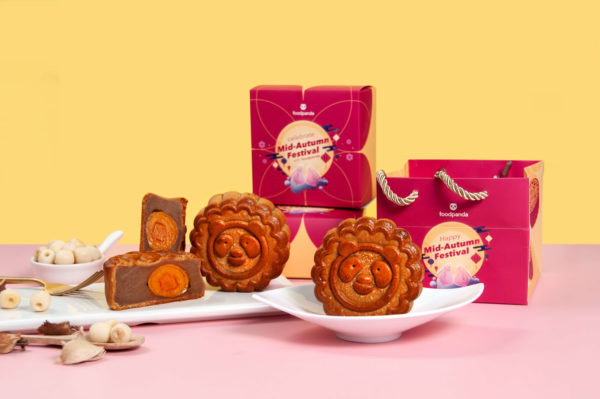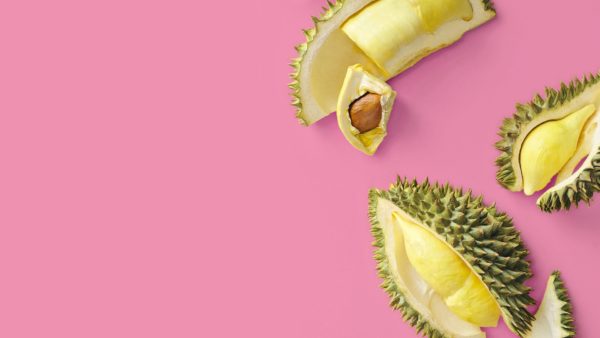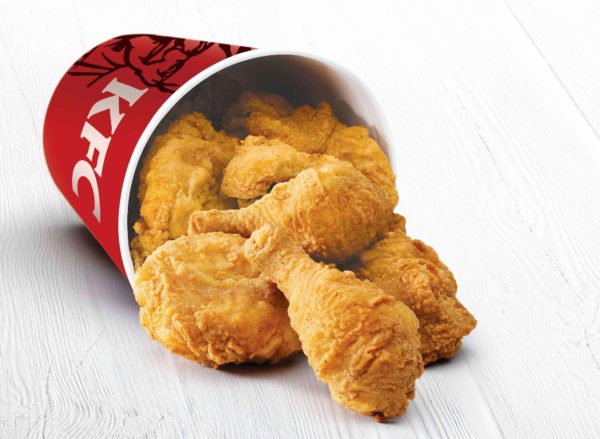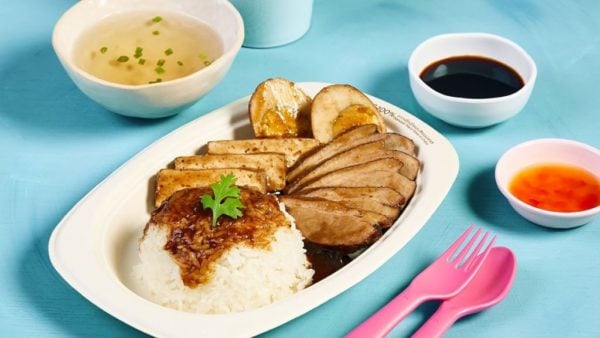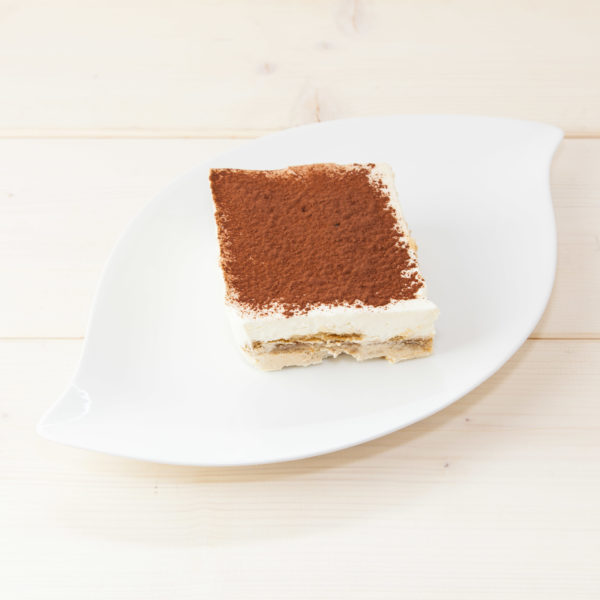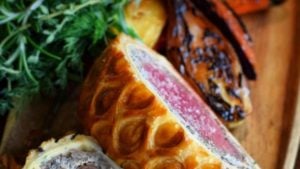One of the best ways to beat the heat wave is to indulge in interesting desserts in Singapore, and while you’re at it, why not try great popsicle alternative, like Yoğart? Being the brainchild and creation of Lee Hwai Chi, a former vice-president in an investment company and the Managing Director of Binchi Creamery Pte Ltd., Yoğart offers artisanal frozen yoghurt, popsicles, smoothies and varied sauces, all made in-store, in its open laboratory behind the store counter. Hwai Chi received an intensive month-long training in 2014 from the famed Carpigiani Gelato University in Bologna, and subscribes to core values in her dessert-making process like passion, integrity and precision.
Yoğart’s unique frozen yogurt recipe sees all desserts being prepared in-store, with no premix used in the process, before turning the blend into healthy and delicious frozen dessert. This means that Yoğart is able to turn up the tartness in-store and cut down on sweetness, whilst delivering to its customers the best in taste and nutrition. The inspiration behind naming the brand, originates from the Turkish word “yoğurt” (which means yoghurt), and “art”, which embodies the artisanal handcrafted essence found in each individual yoghurt offerings in the store.
What inspired your establishment?
I took a sabbatical from full-time employment in 2014. Feeling restless, I thought I would look into possible mini projects to indulge in, whilst on my one year break. As a Malaysian living in Singapore for most of my life, food is without doubt my greatest passion, and so my mini project would have to be food-focused. I also felt that desserts are underrated in Singapore, and more so frozen ones. I chose to focus on happy foods, hence the art of gelato-making and chanced upon a gelatriere course taught at the renowned Carpigiani Gelato University.
At the university, I learnt about the yoghurt making process and savoured for the first time, how amazing and delectable fresh frozen yoghurt was, when made from scratch. I couldn’t wait to share my discovery with my twin sister, Lee Hwai bin. I also did some market research before embarking on the venture, and realised that Singaporeans had not yet been introduced to frozen yogurt shops. What was available in the market then was typically frozen yoghurt, made from a blend of milk, yoghurt powder (premix) and yoghurt. I wanted to fill that void, and as a result, Yoghart was born.
The brand embodies values I strongly adhere to; retention of traditions (to pay homage to my Asian roots) in the yoghurt-making process, with a twist of fun and innovation, through product development. Because we are truly artisans in our space, we chose to be situated in the Arts Zone area, to exemplify who we are and what we represent.
What was the biggest challenge you have had to overcome professionally?
Transitioning from a comfortable employment to owning a dessert store, definitely. Because the F&B business is particularly competitive, we have had to break into a niche market and being relatively unknown, we have to constantly engage the public and pitch about our brand’s uniqueness and get the community to notice us. Social media and social events are definitely useful platforms, given their wide reach and specific target audience.
What do you believe to be the secret ingredient to a restaurant’s success?
Constantly being able to adapt (watching market trends, especially in the F&B industry) and be different.
What common misconceptions do people hold about your job? What’s true, what is not?
I guess, a common misconception of being a director or owner of an F&B business, is that it is an easy job. It is certainly not true! It is time consuming and challenging, and constant attention needs to be devoted to growing a new business. Many issues ranging from sourcing the right ingredients to dealing with kitchen and manpower issues are present, and at the same time, I need to think about strategies to increase market share. Thankfully, it is all a labour of love for me!
What is the funniest thing you have read about yourself in the media?
I’ve not had anything funny written about me yet!
Singaporean influencers have been incremental in adopting early to a variety of social media platforms. Apart from your website, your brand is also shown on Facebook, Twitter and Instagram. How important do you think these platforms are in getting your message across?
I believe that social media is pretty important, for a wider reach. It certainly can make or break a business, judging from the powerful reach of the internet, which makes information very accessible. Because it is so crucial, we do believe in responsible dissemination of information when educating the public about our store’s offerings.
What is your favourite food in Singapore?
The one food which I will travel to and queue for – Nasi Lemak from Changi Village.
Your biggest culinary sin?
When I cook on the weekends, I tend to cook for a village (so says the husband) despite the meal being intended for us both. I then have to deal with leftovers for the next few days. Thankfully, I like what I cook!
History typically plays an intrinsic role in the cuisines a nation eats – how has this affected Singaporean food and/or its food scene in general?
One very distinct trait of Singapore cuisine, is its use of spices. This obviously has its roots in the role Singapore played in the spice trade, when Singapore was established as a tax-free post in 1819. Because of its strategic location, Singapore was and still is known as the melting pot of cultures and cuisines, drawing huge influences from its Chinese, Malay and Indian heritage.
A must-try recipe for a lazy week night?
Curry chicken recipe. All you need is to have a ready “kick-ass” curry paste (I get mine from Redhill market), stir fry the paste till fragrant and sprinkle curry leaves, cinnamon sticks, star anise, cloves and tomato paste. Gradually introduce slightly seasoned chicken pieces, and potato chunks and coconut milk. Curry chicken can be eaten with almost anything – rice, bread or noodles.
Which are your 5 favourite places to enjoy good food globally?
Spain, Italy, China/Hong Kong, Malaysia and Singapore.
Which latest trend restaurant do we have to try?
Timbre+ – the 1st container and food truck food place in Singapore. I like how the F&B scene continues to evolve in Singapore, but evolution usually means having to sacrifice those who cannot keep up.
With Timbre+, there will be an injection of a vibrant hipster feel to the space and the new concept restaurants, but the best thing about the space is that some of the hawkers who used to ply their businesses in the canteen before the transformation, will have a space for them to continue serving hawker fare, which undoubtedly is a staple for any Singaporean. This means that progress did not, in this case, translate to the demise of old traditions; rather it celebrates old traditions alongside the new.
Do any of your friends or family members influence you in your decision when it comes to what you serve in the restaurant?
Yes, most definitely and it is not just confined to friends or family members. In fact, because we are so versatile, we can customise flavours of frozen yoghurt and popsicles to suit customers’ preference. We also challenge ourselves with adventurous suggestions from customers wanting the ‘wow’ factor, and have on an occasion delivered blue lime margarita and earl grey frozen yoghurt, in addition to our extremely popular natural green tea flavour. We also believe in being all-inclusive, and have refrained from using gelatine or animal products in our products.
What was the funniest / most surprising / best / most gruesome food delivery experience you have had so far?
There has so far been no big surprises or disappointments experienced by me, when it comes to food delivery. I guess I have been lucky!
Which traits and characteristics of service, based on your own experiences, matter most in premium food delivery?
Quick, efficient and affordable service.
Complete the sentence: On Saturdays, I am most likely to..
Be found at our Yoğart store or at home (completing administrative tasks for Yoğart) or exploring suitable locations for the next Yoğart store.
What is your biggest dream for the future, and how are you hoping to achieve it?
I hope to be able to put in place a business structure (modelled around Yoğart) that is sustainable, and replicate it in places like the Philippines, Thailand and other ASEAN countries so that womenfolk need not have to leave their countries and families in search of a better life. This is a work in progress and I’m constantly learning new things about the business.
Finally, share your very own signature dish and its recipe with us!
Our prized product is our base product, which is the yoghurt mixture.
All I can share with readers is that the yoghurt is made from scratch, using fresh low fat milk (1.1%). The process begins with milk being poured into our very own ThermoCrema (cream cooker) machine, and heated till it’s pasteurised and its protein structure broken down. The liquid is then left to cool to 45°C (the ideal temperature for yoghurt fermentation), whereupon a starter culture (probiotics) is introduced. The entire mixture is left to ferment and set, at the same controlled temperature for 6 hours, to maintain our yoghurt’s characteristic tartness. When fermentation is complete, the machine cools the mixture to 4°C, before it is extracted. Sugar (20%) and stabilisers are then added to complete the process.
Because of all the love that goes into the process (as opposed to a premix), our frozen yoghurt offerings are distinct and unique.
Wani’s writing has always spoken on her behalf far more than the spoken word. Her emotional relationship with food is almost as intense as her crazy love for HIIT workouts. Having had experience writing about all things lifestyle, Wani now embarks on her freelance journey on foodpanda Magazine.
“
